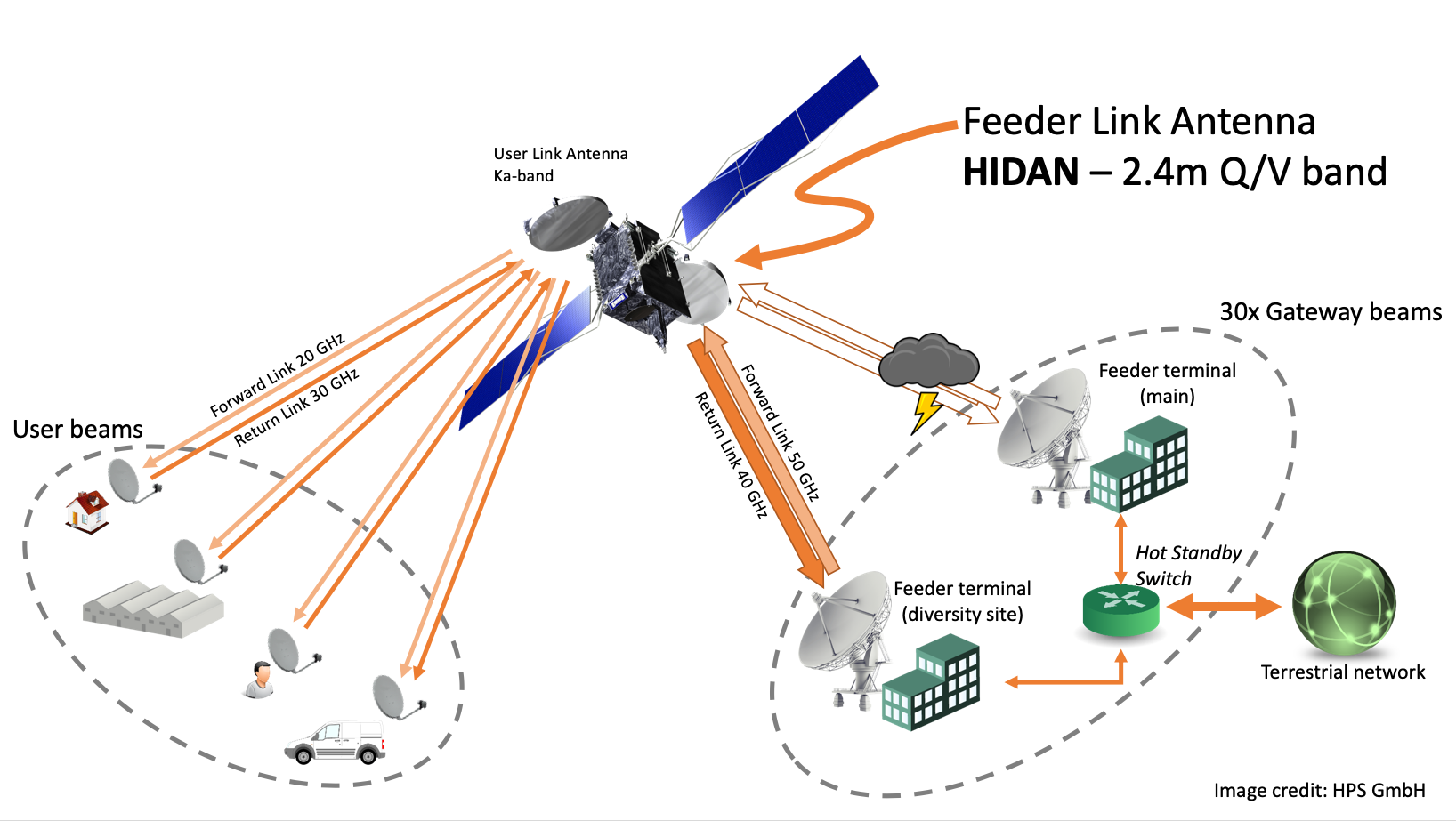
The race for in-orbit capacity for data transmission has been given a big helping hand with the development of the first large European Q/V-band reflector. The reflector, which was developed under ESA’s ARTES Advanced Technology (AT) programme, along with German Space subsystems specialist HPS GmbH is a significant step forward in the conception of terabit satellites.
A terabit (from the Greek ‘tera’ for monster) amounts to one trillion bits or ‘pieces’ of binary data and is the amount of data that is transferred in a second between two telecommunication points or within network devices. More recently, ‘terabits per second’ has become a common measurement of bandwidth upload/download speeds – giving an idea of the ‘monster-sized’ quantities of data involved.
Recent developments have brought terabit satellites from the realms of science fiction into a practical reality.
 In orbit Q/V-band feeder link antennas with a reflector aperture between 2 and 2.4 m are necessary for data up- and downlink to the terrestrial gateway, to complement the internet infrastructure. This can provide an alternative in service areas where high-speed internet is not accessible (e.g. rural areas, remote regions and oceans).
In orbit Q/V-band feeder link antennas with a reflector aperture between 2 and 2.4 m are necessary for data up- and downlink to the terrestrial gateway, to complement the internet infrastructure. This can provide an alternative in service areas where high-speed internet is not accessible (e.g. rural areas, remote regions and oceans).
ESA and prime contractor HPS GmbH, together with three subcontractors – the fibre composite specialist INVENT GmbH, the test centre IABG mbH and the space communication specialist Tesat Spacecom GmbH – successfully developed, manufactured and tested a 2.4 m Q/V band reflector, using a ‘multi-beam’ approach, which is able to focus several gateway beams to cover 30 ground stations in a region larger than Europe.
Alexander Ihle, Technical Officer of the project at ESA said: “We are constantly pushing the boundaries of technology: this was the next step in a series of European reflector developments. We can now make use of higher frequencies, which enables higher data rates. These are necessary to distribute information, such as high-definition content, around the globe.”
“What’s incredible about this project is that not only did the team scale up the technology, but they managed to achieve it while enhancing the accuracy – which was tricky as scaling usually involves a trade-off. ” Alexander Ihle, Technical Officer at ESA
The 2.4 m Q/V-band reflector was developed, manufactured and successfully tested (vibration and acoustic loads, thermalvacuum cycling, thermo-elastic distortions and shape accuracy). (Image credit: HPS GmbH)
Paolo Proietti Zolla, project manager at HPS GmbH said “This reflector is lightweight – less than 25kg, accurate and ultra-stable – in the micrometre range. We’ve proven that it’s feasible to design and manufacture it with existing technologies. This project also demonstrates that the technology is ready to be considered for future high-data-throughput telecommunication missions that require large reflectors.
“This is the first large European Q/V-band reflector. It is one of the key components of terabit satellites. Once this technology flies, these satellites will enable people to enjoy faster internet and a faster data connection.”
“We have demonstrated Q/V-band reflector technology and it is ready to fly. This is a big step forward in the development of terabit satellites.” Paolo Proietti Zolla, HPS GmbH




